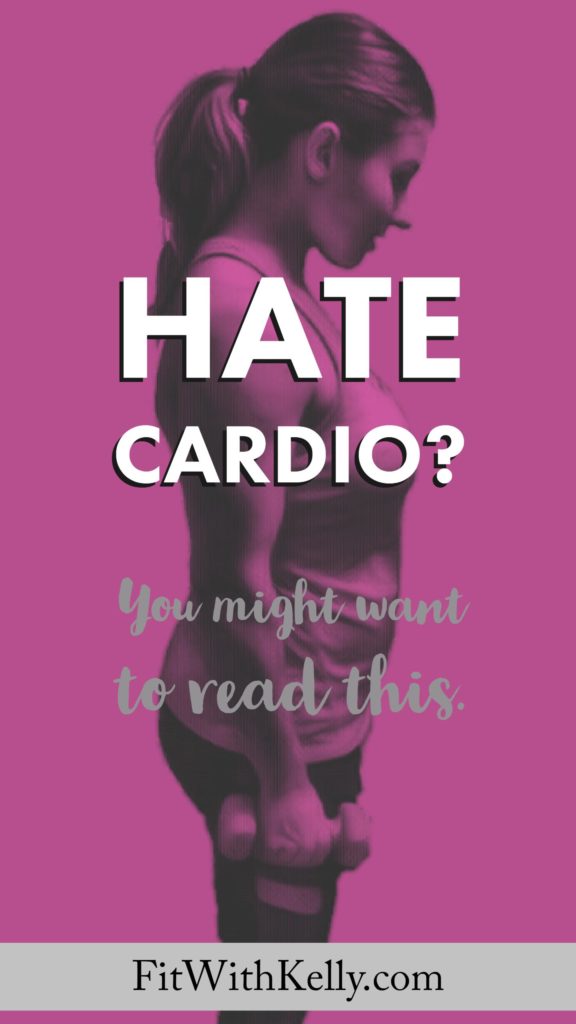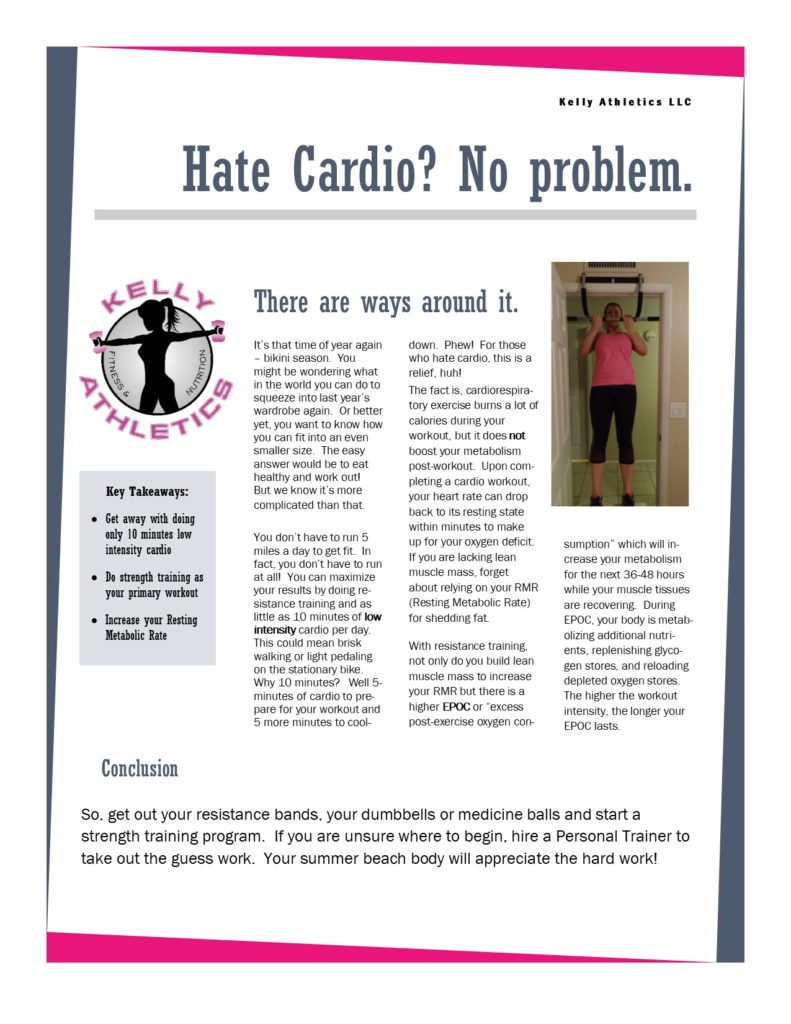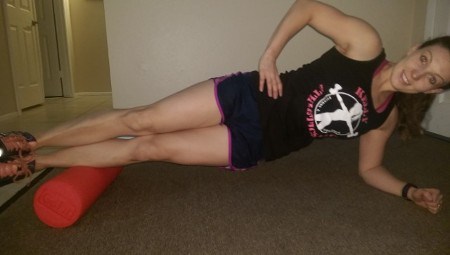"I Hate Cardio - What Can I do?"

If you hate cardio it's really NO PROBLEM because there are ways around it. I'm about to tell you exactly what to do! Read on...

It’s time to get in shape again! You might be wondering what in the world you can do to squeeze into last year’s wardrobe. And now you want to figure out how you can fit into a smaller size,but you're thinking "I Hate Cardio!". The easy answer would be to eat healthy and work out! But you hate cardio!! And it’s more complicated than that.
You don’t have to run 5 miles a day to get fit. In fact, you don’t have to run at all! You can maximize your results by doing resistance training and as little as 10 minutes of low intensity cardio per day. This could mean brisk walking or light pedaling on the stationary bike. Why 10 minutes? Well 5-minutes of cardio to warm-up for your workout and 5 more minutes to cool-down. Phew! For those who hate cardio, this is a relief, huh!
The fact is, cardiorespiratory exercise burns a lot of calories during your workout, but it does not boost your metabolism post-workout. Upon completing a cardio workout, your heart rate can drop back to its resting state within minutes to make up for your oxygen deficit. If you are lacking lean muscle mass, forget about relying on your RMR (Resting Metabolic Rate) for shedding fat.
With resistance training, not only do you build lean muscle mass to increase your RMR but there is a higher EPOC or “excess post-exercise oxygen consumption” which will increase your metabolism for the next 36-48 hours while your muscle tissues are recovering. During EPOC, your body is metabolizing additional nutrients, replenishing glycogen stores, and reloading depleted oxygen stores. The higher your workout intensity, the longer your EPOC lasts.
Key Takeaways:
Get away with doing only 10 minutes low intensity cardio.
Do strength training as your primary workout.
Increase your Resting Metabolic Rate.
Conclusion:
So, get out your resistance bands, your dumbbells or medicine balls and start a strength training program. If you are unsure where to begin, hire a Personal Trainer to take out the guess work. Your summer beach body will appreciate the hard work!
If you think "I hate cardio", but are looking for a Personal Trainer that can make cardio more fun (or totally exclude cardio altogether), contact me.
